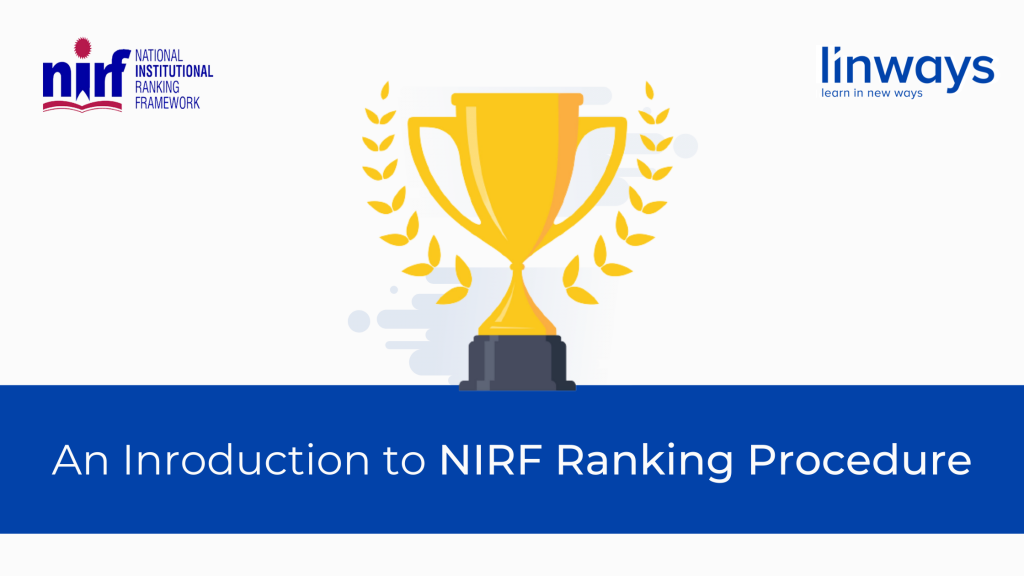
NIRF Ranking Overview
NIRF ranking has evolved to be the most authenticated and recognized ranking methodologies for higher education institutions in India.
National Institutional Ranking Framework is a ranking methodology introduced by the Ministry of Human Resource and Development in India in the year 2015. The main objective of this ranking system is to encourage the institutes to compete against each other and work towards their growth.
One of the great advantages that NIRF provides is that the ranking is taken place every year. Hence, the institution has the provision to apply for the NIRF ranking every year. Another added advantage is that unlike the accreditation as the NIRF ranking takes place every year, it ensures that the performance and quality of the higher educational institutions are never compromised.
Let’s see some of the key features of the ranking process :
- Categorization of Institutions
Each institution will be categorized based on the discipline of courses that it offers and the type of institution. This helps in bringing collectivism into the ranking procedure and normalization of the scores obtained by the institutions.
The following categories of institutions are included in the ranking process :
- University Category
- Engineering Category
- Management Category
- Pharmacy Discipline
- Colleges Category
- Medical Discipline
- Law Discipline
- Architecture Discipline
- Dental College and
- Research Institutions
There will be ranks for institutions category-wise as well as an overall ranking will be awarded for the institutions that meet the required set of criteria.
2. Ranking based on Objective and Factual parameters
In the NIRF ranking process, 90% of the parameter is objective and fact-based. The factual data corresponding to each parameter can be easily prepared from various data that are readily available during various phases in the academic process.
The Remaining 10 % of data is collected as subjective perception from academic peers, faculty, students, and other stakeholders. Subjective data is usually collected with the help of surveys which are done periodically through the NIRF portal.
The five ranking framework metrics are :
- Teaching, Learning, and Resources
- Research and Professional Practices
- Graduation Outcomes
- Outreach and Inclusivity and
- Perception
Boons that NIRF can bring to Indian institutions :
- Helps institutions in bringing up their quality on par with international standards.
- Promotes the excellence of educational institutions by creating a sense of competition among Indian universities.
- Helps institutions to identify areas of improvement.
General causes of setbacks for some institutions in NIRF Ranking are :
- Certain institutions which lack resources as compared to private and central institutes might have chances of getting lower ranks.
- Competitions between institutions with only three passing batches with well-established will be inequitable.
Now we have covered an overview of the NIRF ranking and the basic parameters that are involved in the process.
In the 2021 NIRF ranking process the total number of institutions that participated was 4030 (Data submitted). In upcoming years more institutions are expected to participate in the NIRF ranking process and create massive competition.
In our next blog, we will be explaining why NIRF ranking is crucial for your institutions to identify the category under which your institute belongs.
_______________________________________________________________
Also published on Medium.




